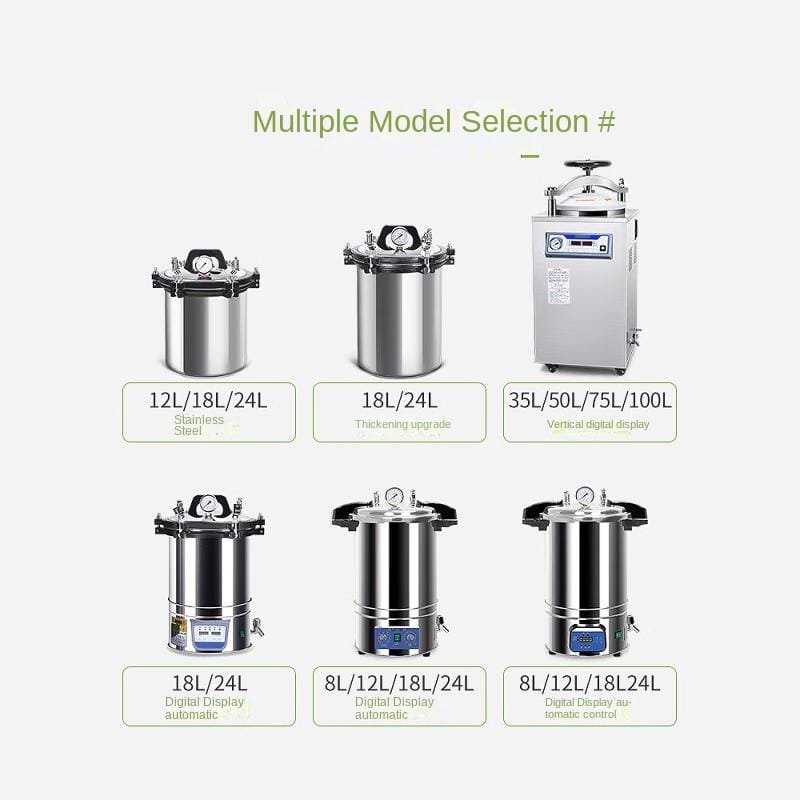
The autoclave serves as a vital instrument across multiple sectors like healthcare and labs to sterilize tools and materials. What does an autoclave do? The autoclave operates through steam combined with pressure and heat to destroy microorganisms making surgical instruments along with lab equipment and other items safe for use. **Define autoclave**: The autoclave functions as a sealed chamber which produces high-pressure conditions that enable successful sterilization.
**How does an autoclave work? The autoclave operates based on steam at elevated pressure levels. Heating water creates steam that remains trapped inside the chamber. Elevated pressure inside the autoclave chamber raises water’s boiling point to produce steam that reaches sufficient temperatures to destroy bacteria, viruses, and spores. This process ensures thorough sterilization.
The autoclave sterilization method stands out as one of the top approaches for sterilizing materials using moist heat. Steam sterilization eliminates microorganisms by exposing them to high-temperature steam that denatures proteins and disrupts cell membranes. Steam infiltrates materials and the elevated temperature breaks down proteins while breaking cell membranes which results in the destruction of microorganisms. Autoclaving stands out as the best approach to moist heat sterilization because it operates quickly and reliably without leaving behind any chemical residues.
The standard range for autoclave sterilization temperature extends from 121°C up to 134°C. Effective sterilization depends on controlling both the temperature and pressure settings in an autoclave. At 121°C the autoclave maintains a pressure level of 15 psi throughout a 15-20 minute period. Operators must maintain strict control over steam sterilization temperatures to guarantee complete destruction of all microorganisms. Autoclave sterilization should typically occur at 121°C but other temperatures can be applied for special situations.
Steam autoclaves represent the most prevalent category within the multiple types of autoclave machines available. Hospitals, laboratories and research facilities frequently use steam autoclaves because they deliver efficient and reliable sterilization results. The range of autoclave types covers both gravity displacement autoclaves and vacuum autoclaves which are designed for unique sterilization requirements.
Hospitals require autoclaves for sterilizing surgical instruments as well as medical gowns and equipment. Dedicated autoclave rooms in hospitals operate these sterilization devices according to stringent safety guidelines. Sterilization procedures protect patients by reducing infection risks.
What materials should be used when covering items prior to autoclaving? Items receive protection from contamination through wrapping in autoclave-safe bags and paper. Ensure surfaces are clean of debris and organic material before autoclaving. Operating an autoclave requires the proper placement of items inside it along with setting precise temperature and pressure levels before verifying the successful completion of the sterilization cycle.
The combination of high temperature and pressure within a steam sterilizer eliminates all microorganisms. **How hot does an autoclave get? Standard operating temperatures for autoclaves range between 121°C and 134°C which is sufficient to destroy most infectious agents. For pressure temperature sterilization, the autoclave stands out as the most effective instrument. The autoclave remains the industry benchmark for pressure temperature sterilization. The sterilizer functions by developing conditions which eradicate all microorganisms to achieve full safety.
結論
Hospitals, laboratories and various industries rely on autoclaves as essential instruments for sterilization. Users who understand the operational mechanics of an autoclave sterilizer along with its sterilization process and temperature pressure requirements can maintain safe and successful sterilization practices. The autoclave stands as the most dependable approach for total microbial destruction when sterilizing surgical instruments or lab equipment.
Why Autoclave Is The Best Method Of Sterilization